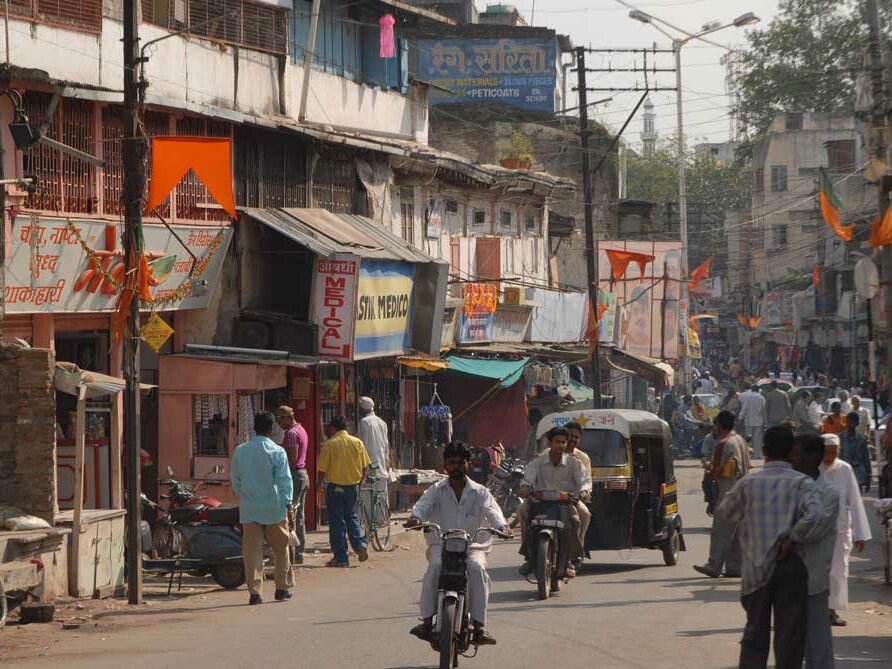China: Is the locomotive running out of steam?
By Dr Christian Bickert, DLG Mitteilungen
We have become well accustomed to China repeatedly ensuring that oilseeds, dairy products, pork and, most recently, cereals are in short supply on the world market and command high prices. For a good ten years, the situation in the country has dominated almost every market analysis. But the growth engine is stuttering. It is not that demand in China is declining - that is not expected for the next few years. But it will hardly increase. Figuratively speaking: The train keeps rolling, but it is not pulling any new wagons. What are the reasons for this thesis? In a nutshell, there is only one reason: the working-age population is shrinking, the number of old people is rising - after 30 years of one-child policy, China has the same problems as Germany or Japan.
For some time, the Chinese economy can still grow because technical progress can compensate for the decline in the labour force. But there are hardly any labour reserves in China. At the same time, the demand for labour in the medical and nursing sector is increasing. This is inevitably accompanied by a slowdown in economic growth, which can be observed in the trend since the mid-2010s. If prosperity no longer grows across the board, there are also hardly any increases in demand and imports, apart from individual crop failures or epidemics such as the African swine fever (ASF).
China's demand for food
The importance of China for the growth of global demand for food in the past 20 years can be illustrated very impressively by a few figures. The development of soybeans was spectacular: at the turn of the millennium, the Chinese bought about 13 million tonnes of soybeans from the USA and Argentina, which was a quarter of the world's traded quantity. Twenty years later, they imported 100 million tonnes, 60% of the volume shipped worldwide. The meteoric rise of soybean cultivation in Brazil and the Chinese hunger for the oil crop were two sides of the same coin.
In relative terms, the increase in grain was even greater. In 2000, Beijing bought not quite 3 million tonnes of maize, wheat, rice, sorghum and barley from abroad. By the mid-2010s, this amount had risen to between 24 and 26 million tonnes, depending on the year. While this was still 1.3% of the world grain trade in 2000, by the mid-2010s 9% of export grain was destined for China. The failed harvest in 2020 even led to imports of 66 million t (13.7% of global grain trade), but this figure is an extreme. Currently, 10% of grain exports go to China again.
Influence of Covid and African swine fever
COVID-19 has recently distorted import statistics, but this is even more true for ASF, which has been ravaging China since 2015. Before the outbreak, the country bought between 17 and 18% of global pork supplies, but also re-exported some of it. With ASF and the 2020 crop failure, China's share of the global pork trade rose to almost 50% for a short time, but the latest forecasts of the US Department of Agriculture for the current year assume only just under a quarter. Apparently, the government in Beijing is trying to buy feed raw materials rather than meat.
If one summarises the trade figures and the economic and population development of the past 20 years, it quickly becomes clear that China has been the core of the global increase in demand. There were (and are) plenty of other countries that are also seeing huge increases in their demand and imports. From Mexico to Bangladesh or Indonesia, North Africa or the Middle East - many countries have experienced strong population growth and a high increase in wealth that they could not and cannot generate on their own. But no country has even come close to the import growth that China has experienced.
But what happens when China's demand stops growing, possibly even falls slightly? Which country will then be able to "pull the train"?
India is no substitute for China
It cannot be a single country. Only India would have the population size and economic development to potentially generate Chinese imports. But India is not only self-sufficient, it is even a notable exporter of many important agricultural products. India is the world's largest supplier of rice and beef, sells large quantities of sugar and wheat abroad, and even occasionally acts as a seller of soybean meal. Massive imports of fertiliser (India is the world's largest buyer of urea and DAP) are among the reasons for this.
For future growth in demand, the focus must therefore be on economically strong countries with a comparatively large population. Countries that are aiming for a strong expansion of biofuels based on vegetable oils or grain would also come into question. These countries certainly exist, but they are mainly countries with huge export surpluses. Namely the USA and Indonesia for biodiesel from soy and palm oil respectively. Or Brazil, which is increasingly using maize to produce bioethanol.
Seven countries with great potential
The most promising candidates, whose demand growth could match that of China in recent years, are Egypt, Nigeria, Pakistan, Indonesia, Mexico, Vietnam and Bangladesh. Three of these countries already have more than 200 million inhabitants (Indonesia, Pakistan, Nigeria), while the others have between 97 million and 168 million and are growing rapidly. Together, they have 1 billion inhabitants, who are also only 17 (Nigeria) to 29 (Indonesia, Mexico) years old on average. Only the Vietnamese are over 30 years old on average. By comparison, the Chinese population has an average age of 38. In terms of population development, one could add Ethiopia, which has 120 million inhabitants with an average age of just over 18.
Of course, simply looking at the number of people and thus potential consumers is not enough. China, too, only became interesting for the agricultural market when its massive economic growth began after Deng Xiaoping liberalised the market in 1999. A look at the economic data of the countries mentioned shows that, although they are mostly far from the 10% growth of the Chinese in the 2000s, they have nevertheless been showing solid growth and thus positive purchasing power development for years.
Indonesia's gross domestic product (GDP), for example, has grown at a very steady 5% to 6% annually since 2010 (with the exception of the 2020 corona year). Pakistan is on an upward trend between 4 and 6%. Vietnam had a strongly rising economic development until Corona, with 7% growth most recently. And even in the Corona years, growth only dropped to a still positive 2.6%. Egypt averages 3% over the last ten years, but Bangladesh 6 to 7%. What this means can be seen in the country's wheat imports in recent years: It rose by a good 2 million tonnes from 2018 to 2020, and even after the price explosion from 2020 onwards, the country's imports were still 1 million tonnes higher than in the years before 2018. This reflects the combination of purchasing power growth and population growth.
Who can compensate for China's decline in demand?
Three of the eight big countries are probably not in a position to "pull the cart": Mexico only achieves economic growth of 2 to 3% and Nigeria is bringing up the rear with 2% most recently and minus rates in some cases. There, GDP growth is not even sufficient to absorb the growth of the population, which means declining purchasing power per capita. The country, which is also politically unstable, is not a future market for processed or expensive food, but it is for basic foodstuffs.
Despite enormous economic growth of a stable 10% between 2010 and 2017, Ethiopia is also an uncertain market. Political unrest there has caused economic growth to fall to "only" 6%, making further development questionable. Moreover, the country has enough fertile land to feed itself.
Conclusion
In the coming years, we will have to adapt to new markets. There will no longer be the one bandwagon that the market is looking at. This means that the market impact will be distributed among several countries, which can also compensate for each other.





